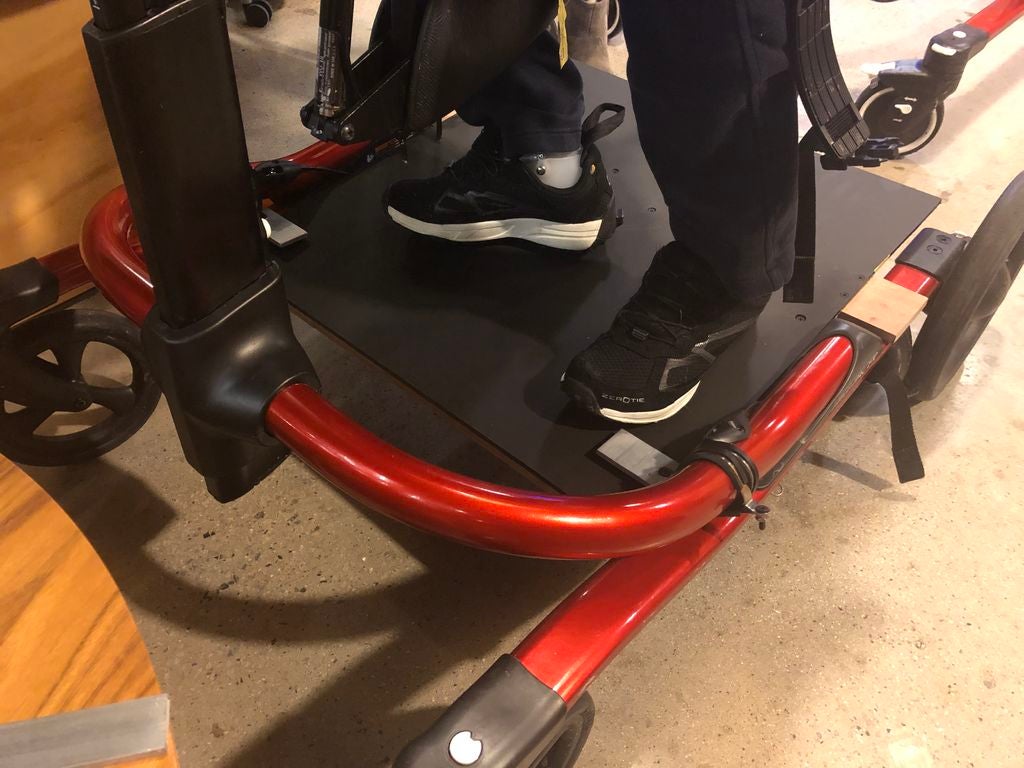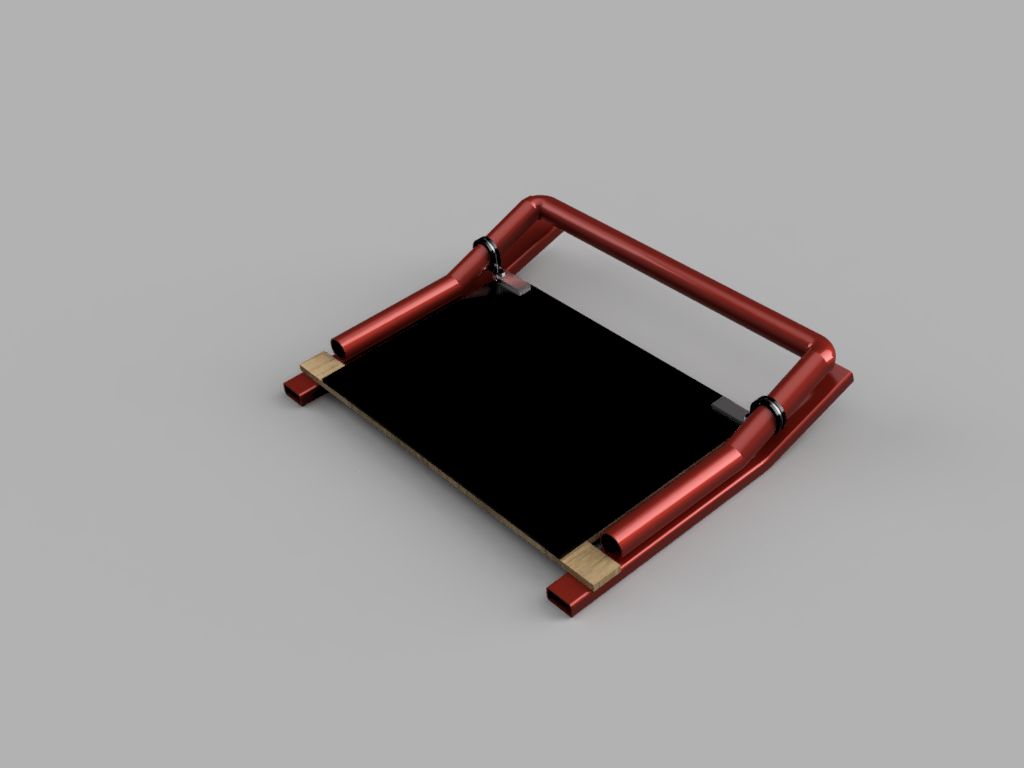Removable platform for gait trainer
assistive technology

Overview
Roles: Team Lead, Mechanical Design
Skills: User Interviews, User Testing, CAD (Fusion 360), Material Selection
Time: March 2019 (1 weekend)
Team: 3 (MechE, AeroAstro, Chem)
Developed as part ATHack 2019. I led this project and conducted the initial interviews as well as a majority of the manufacturing of the final device.
The Problem
The purpose of this project was to design a base to support our user’s feet and allow him to be in a more seated position.
This would increase the ease of transportation so that he would not have to be constantly lifted up and down by others to move around. At the same time, the platform would be removable, allowing our user, Julian, to stand within the gait trainer when desired. The platform was designed to attach to Julian’s existing outdoor gait trainer with no permanent modifications to the frame.
The Process
The challenge of this project was attaching to the existing frame, which was an unusual shape. In addition, we did not have constant access to the frame during prototyping. For this reason, the frame was rebuilt in CAD and the design was developed using the 3D model.


In addition, in order to make sure the design was accessible, we tried to use off-the-shelf parts and minimize the use of any special tools. A detailed description of the process can be found in this Instructable.
The Result
The photo below shows the final prototype of the removable platform.

We tested the platform with Julian, though testing was limited so we could not assure the durability of the prototype. The final prototype was given to Julian (we asked for permission to include this video).
Reflection
This quick hackathon was a challenge because of the short amount of time we had to build our final solution, despite having some time ahead of time to work with Julian’s family to determine exactly what they needed and the challenges they were facing. Although we were able to come up with a relatively good solution, we could have made something of higher quality that would last longer given some more time. I think that this is a challenge of working with assistive technology since you want to deliver something that is useful to the people who you are working with, who are giving their valuable time and energy as well. However, it is not always possible to provide continued support or assistance with maintenance, which may lead to the hacked solution being discarded. Hopefully, Julian was able to use the platform at least for some amount of time!